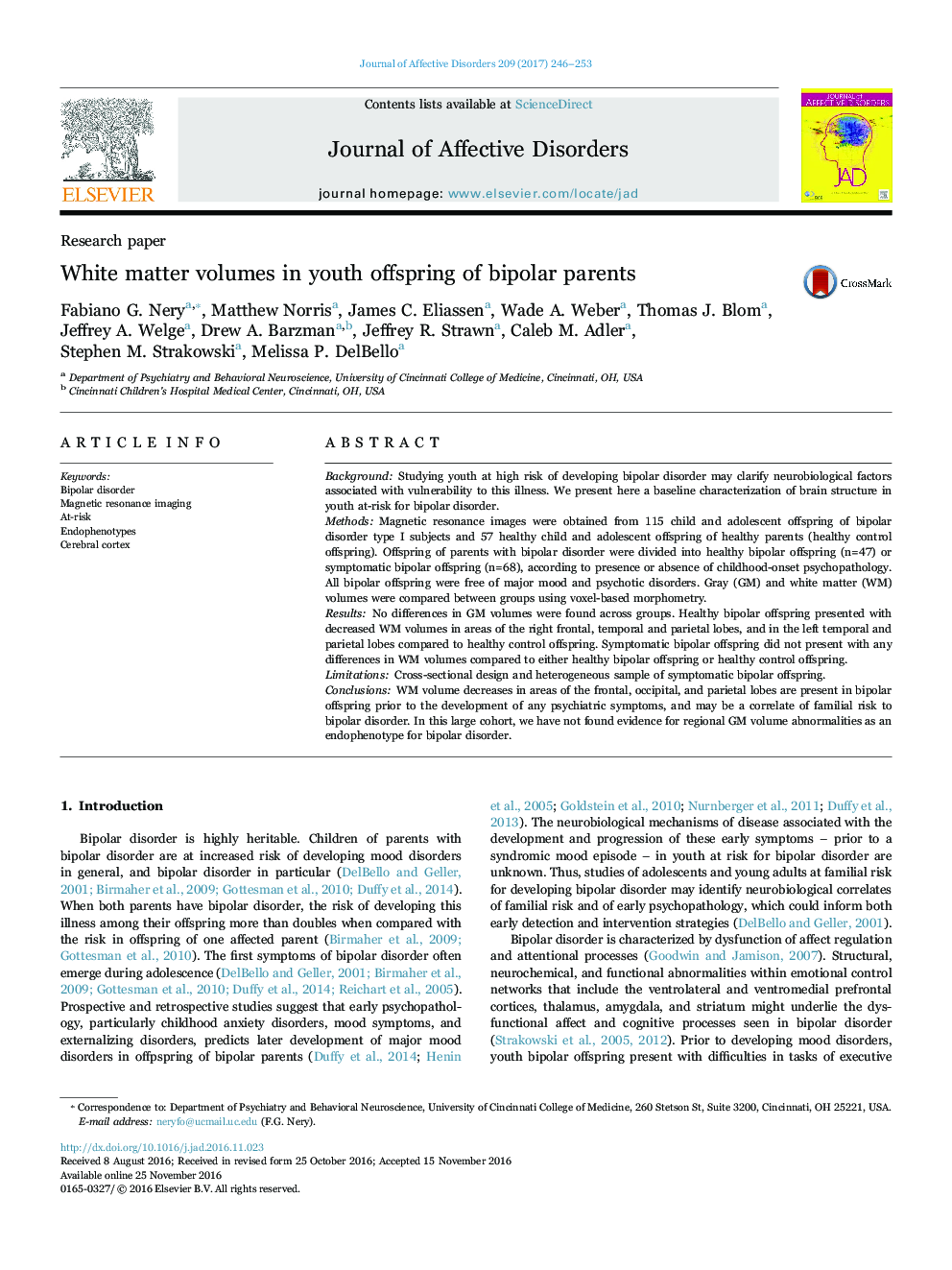| Article ID | Journal | Published Year | Pages | File Type |
|---|---|---|---|---|
| 5722292 | Journal of Affective Disorders | 2017 | 8 Pages |
â¢Bipolar offspring are at increased risk to developing mood disorders.â¢We used VBM to characterize brain markers of familial risk in bipolar offspring.â¢No abnormal gray matter volumes were found in bipolar offspring.â¢Decrease in white matter (WM) volumes were found in healthy bipolar offspring.â¢Decreased WM volumes may be a correlate of familial risk to bipolar disorder.
BackgroundStudying youth at high risk of developing bipolar disorder may clarify neurobiological factors associated with vulnerability to this illness. We present here a baseline characterization of brain structure in youth at-risk for bipolar disorder.MethodsMagnetic resonance images were obtained from 115 child and adolescent offspring of bipolar disorder type I subjects and 57 healthy child and adolescent offspring of healthy parents (healthy control offspring). Offspring of parents with bipolar disorder were divided into healthy bipolar offspring (n=47) or symptomatic bipolar offspring (n=68), according to presence or absence of childhood-onset psychopathology. All bipolar offspring were free of major mood and psychotic disorders. Gray (GM) and white matter (WM) volumes were compared between groups using voxel-based morphometry.ResultsNo differences in GM volumes were found across groups. Healthy bipolar offspring presented with decreased WM volumes in areas of the right frontal, temporal and parietal lobes, and in the left temporal and parietal lobes compared to healthy control offspring. Symptomatic bipolar offspring did not present with any differences in WM volumes compared to either healthy bipolar offspring or healthy control offspring.LimitationsCross-sectional design and heterogeneous sample of symptomatic bipolar offspring.ConclusionsWM volume decreases in areas of the frontal, occipital, and parietal lobes are present in bipolar offspring prior to the development of any psychiatric symptoms, and may be a correlate of familial risk to bipolar disorder. In this large cohort, we have not found evidence for regional GM volume abnormalities as an endophenotype for bipolar disorder.
